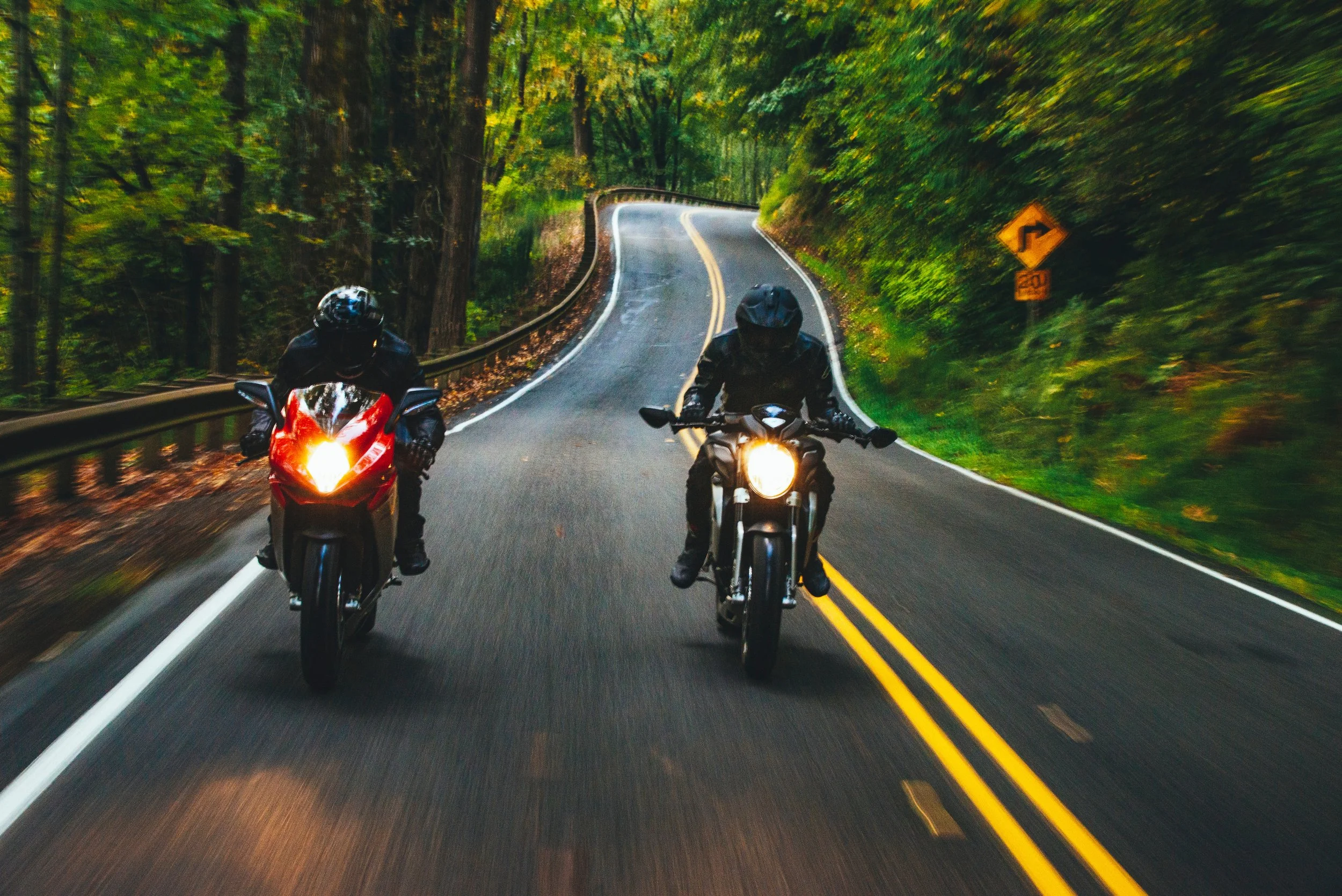We couldn’t have made this post without help from our sister site, GritShift. GritShift specializes in parts and accessories for high-powered e-bikes from Sur Ron, Segway, Talaria, and more. They also fabricate their own parts and are all-around cool people if we do say so ourselves. Check them out at GritShift.com.
Electric bikes, or E-bikes, are exploding in popularity across the nation, and it isn’t hard to see why: they are light, agile, swift, and can get you up to forty miles of travel on a single charge. These bikes are inexpensive, easy to drive and use, and are a great way to get around the urban jungle. But they do pose a challenge when it comes to roadway use.
E-bikes are a great mode of transportation for getting around the city using existing bicycle infrastructure, but sometimes you need access to public roads if you use an e-bike for your daily commute. Today we will go over what exactly makes an e-bike street legal or not, what needs to be done to make one street legal, how it is categorized, and most importantly, how you can register and tag yours.
E-Bikes versus Electric Motorcycle
First and most importantly, what exactly is an e-bike? And what is the difference between an e-bike and an electric motorcycle?
So, an e-bike is an electric bicycle. At least, that is the idea.
An e-bike is considered a low-speed electric bike as long as it is under 750 watts (1.01 horsepower). Because they are federally considered consumer products, these machines are regulated as consumer products rather than by conventional transportation laws. E-bikes are not considered motor vehicles as long as they are equipped with functional pedals with a top speed of less than 20mph when operated by a rider weighing 170 pounds.
But, this leads us into another area: e-bikes that are more powerful than CPSC-identified low-speed electric bicycles. Depending on the performance envelope, they can require registration as a motorcycle or moped. You don’t have to register e-bikes, but you will earn an insta-ticket from the local po-po if you cruise down the strip without a tag on something that isn't street legal and isn't a bicycle. We're looking at you, Sur Ron riders!
What Are The Classes of E-Bikes?
As of right now, this is still in flux. Technology advances far faster than bureaucracies can keep up with or adapt to, and the states are still trying to figure out what exactly to do with the e-bike boom.
Here are the three classes as we see them now:
Class 1
Class 1 e-bikes are outlined above: 20 mph maximum speed, an electric motor only in operation when the rider is pedaling. These are also known as pedelecs.
So, class 1 bikes are intended to operate in concert with traditional bicycles, operating on established bike lanes, so they are limited to speeds under 20 mph.
Class 2
These bikes also may go no more than 20 mph, but they have a throttle that allows the electric motor to propel the bike without pedaling. Again, these are meant to be ridden in the same places as analog bikes. The Super 73 S-1 is an example of a class 2 bike.
Class 3
Class 3 bikes are similar to class 1, but the powered boost tops out at 28 mph and must be equipped with a speedometer.
Extracurricular Speed
It's common knowledge that many electric bikes circumvent those speed restrictions we discussed, but how? Because they certainly are, and advertising accordingly!
Take the HPC Black Lightning, a 2,000-watt scorcher designed to go more than 40 mph. Or the speedy HPC Revolution X, powered by a 7,000-watt motor, pushes this monster e-bike up to 60 mph and can achieve ranges up to 100 miles with an upgraded battery.
So, how in the world do e-bikes get around these rules? They don’t. If they are outside class 1, 2, or 3 bikes, they must be run off-road only, or you must register them as motorcycles.
So…isn’t this hackable? Yes, very. But even though the rules seem to be in flux, the police will know that you are not legal if you are cruising down Ventura doing 40 mph with no tag, and the line between bicycle and motorcycle will get blurry real quick.
This is why we at Dirt Legal are huge advocates of making just about anything on wheels street legal, at least if you ever want to take it on the road. There is one universal truth: if you are driving anything on public roads (besides bicycles, of course) and it doesn’t have a valid tag, it will be a target for the police, i.e., the “bored cops.”
Thankfully, there are ways to make your electric bicycle street legal that aren't as complicated as you might think.
How To Make Your E-Bike Street Legal
At first glance, this is an exceedingly significant subject to tackle because e-bikes are so new and difficult to define precisely where they are in the two-wheeled spectrum. Are they bicycles? Maybe. An electric scooter? No, but they have operational similarities. How about a moped? Now you might be getting somewhere.
Historically, mopeds are the closest thing to an e-bike we have seen on public roads and have been around forever.
Why Make Your E-Bike Street Legal
Before further discussing what makes an e-bike street legal or not, how to make one street legal, and what category it would be, let’s look at why you would. Having the plate and registration is a simple hedge against getting in trouble; it’s as simple as that. Of course, there is a caveat: if you then proceed to use the bike lane or anything off-road but still in public (sidewalks, etc.), you then make yourself a target of a different sort. Vehicles tagged for road use stay on roads, and vehicles made for off-road use stay off, even if it is the exact vehicle. Of course, you can always get around it by removing the plate when you don’t want to use it. But if you plan to use your e-bike in the capacity of a commuter on public roads, you should consider our dirt bike registration service. This will get you out of that sticky gray area where e-bikes seem to be hanging in the balance.
Get exclusive guides on how we get your e-bike legal
What Is A Moped?
We will go down this rabbit hole a little because all of the best e-bikes are similar to mopeds.
Mopeds were pedal-powered initially to assist the small gas-powered engines. In the modern era, though, they are looked at and tagged similarly to gas-powered scooters, which look very little like a moped but are close enough to have the same restrictions.
Mopeds and gas scooters have long been famous for congested cities where speeds rarely exceed 30 mph because they get great mileage and cost very little to purchase (new units are regularly in the ~$1,500 range). The kicker is that you only need to have a standard driver’s license for them in most states.
E-bikes are the obvious emissions-free solution for bike riders in urban areas to avoid fossil fuels during their commute, significantly reducing the overall commute price. In addition, the manufacturers of some of the e-bikes on the market advertise that their bikes can be fully charged for just a few cents, making them one of the most economical solutions globally and certainly one of the most fun.
What Are the Licensing Standards for Mopeds?
So, here is the real kicker: is a moped a federally registered vehicle class? What is it? Is it a bicycle or a motorcycle?
According to the combined federal code, a motorcycle “means a motor vehicle with motive power having a seat or saddle for the use of the rider and designed to travel on not more than three wheels in contact with the ground.” A motor-driven cycle “means a motorcycle with a motor that produces 5-brake horsepower or less.” This is pretty vague, so most of the heavy lifting on regulating mopeds is done at the state level.
Let’s use California, for example. In Cali, there is no requirement to have insurance on a moped, but the driver still must be 16 years old at a minimum, and they must have an M1 or M2 license to ride. In addition, you do not need to register a moped, but it still has to be tagged.
In New York, mopeds are categorized as limited-use motorcycles, and there is no titling requirement for these vehicles. However, all mopeds have to be registered and insured in New York.
In New York, there are three classes of mopeds: A, B, and C. I’ll give them a C- for creativity. Class A bikes go between 30-and-40 mph, and you must have a valid motorcycle to operate them. In addition, they have to be inspected annually. The other two classes are slower and do not require a motorcycle license, just a valid driver’s license.
The Benefits of Tagging an E-Bike As A Motorcycle
Registering and tagging your e-bike is pretty clear thinking. If the local municipalities are kicking e-bikes off trails and bike paths anyway, and the police don’t like them on the streets as a bicycle, then registering and tagging your e-bike is a great solution.
Registering and tagging your e-bike removes it from the legislative gray area these keep falling into. Instead, as long as your e-bike is equipped correctly in the state it is tagged in, and you abide by local traffic laws, you should have no problems.
Since e-bikes fall under the regulatory umbrella of the Consumer Product Safety Act, they are not equipped with a VIN as you would find on a motorcycle, scooter, or moped intended to be driven on public roads. However, this may or may not hinder you from registering your e-bike in your home state. As of now, forty-four states have legally defined and recognized e-bikes in some capacity, but this is a work in progress since e-bikes fall under the CPSA. All rules regarding their on-road use fall to the state level. Accordingly, you will just have to take your info to the DMV and see if they will take it. If not, then we suggest our dirt bike registration service. We have a working knowledge of which states are e-bike friendly and will get you hooked up if your state does not want to do it.
As always, the choice is yours to tag your vehicle through another state to circumvent oppressive rules and taxes, and we fully support this. Just know that a “bored cop” might still pull you over even though you have a valid out-of-state tag on your Sur Ron, Super 73, or any other e-bike. If they do, they might be suspicious about your in-state license, or in the case of California, they may still ping you for not having a motorcycle endorsement on your license even though it is tagged out-of-state. So you should think about these things and strategize in case you get pulled over. As I said, we can’t help with that, but we can get registration and a plate on your e-bike, so just smash that contact button, and we’ll get it started.









Motorcycle accidents account for a disproportionate percentage of traffic fatalities and serious injuries. The dangers are real, and the importance of safety cannot be overstated.